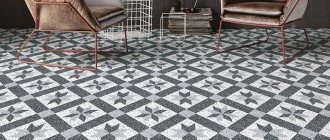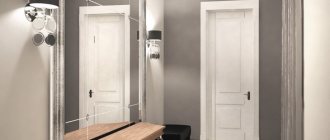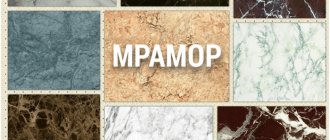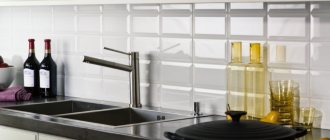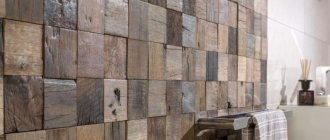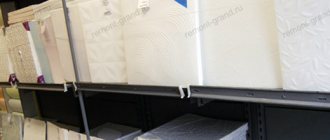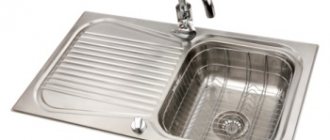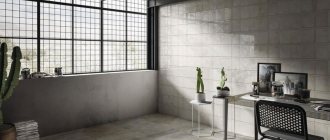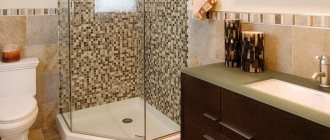Wood floor tiles
Wood-look floor
tiles with wood texture are perfect for floors, walls, and ceilings. Different types of wood look good in a variety of interiors. There are recommendations on which species to choose depending on the design of the room: white pine for Provence style, black oak for Japanese, etc.
And using natural wood for decoration is too expensive, besides, wood is a capricious material and difficult to care for. At the same time, technologies for manufacturing and processing wood-look ceramic floor tiles are now so developed that it can be difficult to distinguish the product from natural wood at first glance. The assortment of “wood” designs is huge, you can choose any color and texture.
Currently, the Russian market offers a large number of porcelain stoneware floor tiles from Russian, Ukrainian, Spanish and other manufacturers. Compared to Western European ones, domestic and Ukrainian ones are on average two times cheaper with good quality and beautiful execution.
Advice. When choosing wood flooring, you need to take into account the size and specifics of the room. For small rooms, light wood tones (pine, birch, etc.) with a softly expressed texture are recommended (catchy lines, as well as dark and bright colors, visually narrow the space). For halls and large living rooms, more saturated colors are suitable: stained oak, cherry. Combinations of different “breeds” look good, as well as combinations with wall tiles imitating cork, leather, fabric, bamboo.
Advantages of natural stone tiles
Of course, we have not listed all types of natural stone cladding. But what unites them all is the set of advantages that is given below:
Luxurious, presentable type of cladding . Thanks to a wide palette of colors, a huge selection of patterns, designs, each buyer can choose a finishing coating to suit their taste.
Experienced designers and decorators successfully use tiles in interiors of any style: from timeless classics to the trendy Danish hygge in 2020.
Wide selection of surface textures . The assortment includes polished tiles with a mirror shine, polished with a rough texture, polished with a velvety texture and beaded, that is, artificially aged.
Hygienic and practical . The material does not require special care, is easy to clean from dirt, and falling dishes, knives and other objects do not harm the surface. Some of the types are weather-resistant, do not crack due to climatic changes, and do not fade.
Long service life . Due to its high hardness and density, the cladding easily withstands deforming and abrasive loads, and is not afraid of water and biogenic factors (mold, fungi, etc.). With good care and timely protective treatment, the stone coating will last at least 30 years.
Fire safety . The stone does not ignite and does not support combustion, therefore, from the point of view of residential safety, it belongs to the KM0 group of building materials.
Excellent compatibility with all types of floor heating systems: water, electric, infrared, etc.
Stone effect floor tiles
Stone -look flooring Decorative porcelain stoneware is also popular here, as well as ceramic and tile flooring. Possible stylizations of natural stone of various colors and textures, “aged” stone, with engraving, with a pattern. There are polished, glossy and matte varieties. For bathrooms, to avoid slipping and injury, matte, embossed, and rough are preferred.
As in the case of wood, natural stone is too expensive a finishing material. Stone-look floor tiles are in no way inferior to them in terms of aesthetics and reliability; moreover, they are much more resistant to wear and various types of impacts. And it is much easier to care for her.
What types of tiles are there for the kitchen?
Often, the main determining factor in choosing tiles for the kitchen is not the price, but its appearance. It is desirable that the tile covering becomes the highlight and main decoration of the interior. Here are the main fashion trends for decorating the floors and walls in the kitchen:
- Wood effect floor tiles. This is an ideal option for lovers of wood in the home. This coating will be an excellent alternative not only to parquet, but also to any wall cladding in the kitchen. Wood-effect tiles look solid and respectable, and, moreover, go well with any other materials and styles of the kitchen interior. It is resistant to liquids and fire and does not require complex maintenance. Many manufacturers have similar tiles in their sets and collections.
Wood effect floor tiles - Tiles imitating brickwork . This type of tile is relevant for the Mediterranean and Italian style, as well as for Provence, it will provide comfort and warmth in the kitchen. Brick tiles vary in shape, size and design, coating, texture and structure. An elegant brick wall is made from mini-format tiles, standard “laying” is done with 10*10 kitchen tiles, a more massive one will be provided by exceptionally large tile-brick sizes.
- Stone effect tiles. This is a great way to decorate a kitchen in Classic and Country style, giving it individuality, brightness and novelty. A wonderful addition to stone tiles will be forged elements, natural wood furniture and rough textile decor. This tile believably imitates natural stone of any type: granite, marble, salt marsh, slate and so on. Aged stone tiles, with abrasions, unevenness, cracks, chips and roughness, are considered extremely popular in the kitchen.
- Imitation leather on tiles. This method is suitable for those who dream of an atmosphere of wealth and luxury, dream of chic and glamor, even in the kitchen. The imitation leather of exotic animals and reptiles looks incredibly elegant. Imitation of crocodile or snake skin looks unusual and impressive on the walls and floor. And “zebra” or “tiger” tiles will fit perfectly into a wild, ethnic, Indian or African interior.
- Metallized tiles. Metal, contrary to many opinions and beliefs, does not make the kitchen cold and lonely; on the contrary, it brings play, intrigue and dynamics into it. Tiles with a metallic sheen will fit perfectly into modern designs in the styles of minimalism, fusion and high-tech. Imitation tiles of copper, brass, gold, platinum, silver and other metals will complement trendy and shocking designs, without requiring special operating conditions or complex care.
Metallized tiles - Tile with crystals, artistic painting or hand-decorated. Using these themed tiles, you can recreate chic kitchen tile panels that will add uniqueness, brightness and novelty to your interior. These luxurious materials are designed for rich kitchen decoration.
- Tile-like fabric. Modern technologies convey the fabric texture on the surface of the tiles so realistically that it is almost impossible to distinguish it from the original. Choose imitation tapestry, canvas, jute, silk, velvet, guipure and so on. This is a truly extraordinary step in the design of a kitchen space, only for special people.
- Prints and patterns in tiles. Bold, rich and daring tile colors for any kitchen interior. Contrasts, patterns, abstraction, prints, ornaments, drawings, all this and much more for the most unusual and colorful design ideas.
- Mosaic tiles . These tiles are suitable for piquant oriental and arabic kitchen interiors. Take a good amount of kitchen mosaic, as you will have to carefully combine the patterns. Multi-colored mosaic tiles combine well with plain and similar colored tiles. Mosaics can be used to decorate any uneven and convex surfaces, this is its great advantage over ceramics and kitchen tiles, which are only suitable for perfectly flat bases.
- Phototile. Do you want to turn your kitchen apron into a real designer art object? Modern tiles with photo printing are at your disposal. The image can be any original and interesting image: a photograph or a drawing. Pictures are applied with special ink that penetrates deep layers of ceramics, so they do not erase, fade or flow. Phototiles open up wide opportunities for decorators and interior designers.
- Volume tiles. A calm kitchen interior requires dynamics, this can be achieved with the help of convex tiles. Volumetric decor, complex patterns, three-dimensional ornaments, visual 3D effects, convex images, all this will set the mood and make the design as interesting as possible.
Volume tile photo - Textured tiles. The intricate texture on the tiles turns it into an exclusive ceramic product. On the fashion wave today, here’s the following technique: a glossy pattern or pattern is applied to a matte surface, uncluttered, healthy and tasteful.
- Figured tiles. Small, complex-shaped tiles will turn the walls or floor of the kitchen into an impressive decorative composition. Such tiles are produced in the form of polygons, trapezoids, oval or round shapes; they do not require borders or boundaries. But only a professional master should install it.
- Glass tiles . There is a glass tile containing a secret inside: leaves, dried flowers, herbs, pebbles, shells, seeds, and so on. Even a few similar tiles in the interior can change the overall impression of kitchen design. Such tiles in design need proper lighting to enhance their visual effect.
Glass apron photo
A huge assortment of ceramic tile catalogs will ensure that the most unusual, bright and daring imagination comes true, making your kitchen interior unique, sophisticated and original! Go to the ADVERTISING website pages, choose a tile that suits your liking and wallet, no one will leave without purchasing.
Marble floor tiles
Marble-like flooring
One of the varieties of “stone-like” tiles is “marble-like” tiles. Everything that relates to stone stylizations also applies here.
M frame comes in various types, colors and shades. Marble-like floor tiles reproduce them all: black marble, white, other colors, “aged” marble, “with cracks”, etc. Thanks to modern technologies, each set has a unique marble pattern that is not repeated even in the same collection.
The advantages of tiling over natural marble: it is more moisture resistant, stronger and easier to clean. It is more difficult to clean marble, despite the fact that it is a fairly easily soiled material.
A few rules to follow when laying tiles with a natural stone look
- Do not rush to immediately dilute the adhesive solution for laying tiles. First, lay out all the tiles on the floor and carefully inspect them, because suddenly there will be some damage or chips.
- Also try to choose tiles that fit the size of your room. For example, bulky stone tiles, especially dark colors, will look unsightly in a small space. But it’s just right for decorating a large living room!
Marmori
- Do not forget to properly prepare the walls before installation. They must be smooth and under no circumstances should they crumble. Moreover, there should be no cracks or dampness.
- Lay tiles from top to bottom, not the other way around.
- For stone tiles, it is better to buy a special glue that will help make the cladding strong and durable. Consult with consultants in stores or read the manufacturer’s instructions.
As you can see, the stone tiles look really cool. Look at the designers' photos and master classes so you don't make a mistake in decorating the room you want. Do not hesitate to take the help of professionals, because the main thing is that the interior turns out to be of high quality and makes you happy.
Floor tiles for laminate
Flooring under laminate
There is no limit to perfection. There are technologies that make it possible to make laminate flooring “like tiles,” and there are others that make it possible to make floor tiles like laminate flooring. Despite the fact that these are completely different materials, both have a lot of advantages. In particular, an elegant look and a variety of design solutions.
Where are floor tiles under laminate or parquet most often used? Of course, in the bathroom, where technical conditions do not allow laying either one or the other. And also in the kitchen: firstly, there is also high humidity, and secondly, fat, soot and other costs of kitchen processes. The tiles are easy to clean and are not afraid of moisture and caustic substances. Unlike laminate, it never forms a stain that cannot be removed later.
Where are kitchen tiles used?
- On the apron. For a kitchen apron you need wall tiles up to 4 mm thick, their pictogram is indicated by a palm icon. A tile apron should not be afraid of household chemicals, grease and dirt, so choose markings with the letters AA, indicating high resistance to aggressive external influences. Ideally, backsplash tiles should be smooth, dense and coated with protective enamel. Tile is easy to clean and repels water and dirt. Today, bright and rich colors on the kitchen apron are in fashion, so we bring to your attention the most colorful colors and shades that complement or contrast with each other.
Tile apron photo
Kitchen apron tiles - On the floor. Floor tiles must be durable, absolutely ready for any aggressive contact. Its pictogram is a foot, it varies in thickness from 5 to 7 mm. The material used to make floor tiles must be exclusively grade 1, with wear resistance of grade 2 or 3. If you have the financial opportunity, take porcelain tiles, you definitely can’t go wrong. It has unsurpassed performance characteristics and high consumer qualities; it is also ideal for creating heated floors in the kitchen, that is, it heats up quickly and cools down slowly. Tile catalogs will allow you to choose colors, textures and designs according to the individual needs of completely different consumers. Remember that cheap tiles are significantly inferior to expensive materials in terms of quality and all user criteria.
Kitchen floor tiles photo - For the table top . A sliding ceramic tile backsplash in the kitchen looks unusual and stylish. Facing tiles for decorating a kitchen worktop must have 5 protection classes. Porcelain stoneware is suitable for these purposes, which, moreover, is not at all afraid of water, hot and cold objects. The window sill is also covered with kitchen tiles, creating an additional working area. You can also use it on the dining table, turning all the countertops in the kitchen into a complete ensemble, original and bright.
Beautiful white tiles for countertops
Tile countertop
Varieties
The assortment of construction stores offers a large selection of cladding that imitates natural stone. These can be a variety of ceramics and other finishing materials similar to natural stone. Among all the diversity we can highlight:
- Terakcotta tiles are made from natural clay in different shades. Therefore, the color range ranges from orange to brown. There are no dyes included at all. There are smooth and structured ones on sale. Exactly the last beautiful tiles for stone-look walls.
- Clinker is one of the options for ceramic materials for exterior decoration. In shape it resembles the spoon surface of a brick. The main substance for production is clay, but dyes are often added. Therefore, imitation stone is encouraged in the manufacture of clinker.
- “Boar” - this type of tile is also classified as ceramic, since it is made from clay mass. Be sure to use double firing. Be sure to cover it with glaze. Typically, this type of finishing is used for the Art Nouveau style, because it is distinguished by a variety of colors. The “boar” has nothing to do with the stone appearance.
- Porcelain tiles are an excellent option for ceramic tiles for facade finishing. This material has the highest technical characteristics, and accordingly the price is the highest. Typically, tiles are produced to look like natural stone, but you can find a wide variety of designs, even imitating wood.
Manufacturers have come up with another interesting version of porcelain stoneware - warm tiles. On the one hand, these are ordinary tiles that can imitate various natural materials (stone, wood) or brickwork. On the other hand, it is insulation (for example, polystyrene foam). Thus, a person buys both cladding and insulation at the same time, which means there is no need to additionally look for a suitable thermal insulation material.
The tiles can be glossy or matte. Manufacturers offer both options with imitation of natural material. For a glossy analogue, appropriate natural specimens are selected, for example, granite or marble. The same applies to matte surfaces. This is done to make the artificial finishing material seem more natural.
Recently, stone-like ceramic tiles have appeared on the market, the design on which was applied using photo printing. And there are several ways to secure a picture:
- First, the required texture is printed on special paper. Then it is glued to the tile and coated with a durable varnish. It is absolutely not suitable for decorating a facade.
- The pattern on the base is created using various substances. Then it is fixed with glaze and fired. This option is more suitable for external use. It is almost impossible to damage the drawing.
- And the last option is true photo printing. The design is created on top of the glaze and fixed under ultraviolet radiation. This is the most expensive option. But the pattern is not highly resistant to negative environmental factors. But a building covered with such tiles makes an indelible impression.
